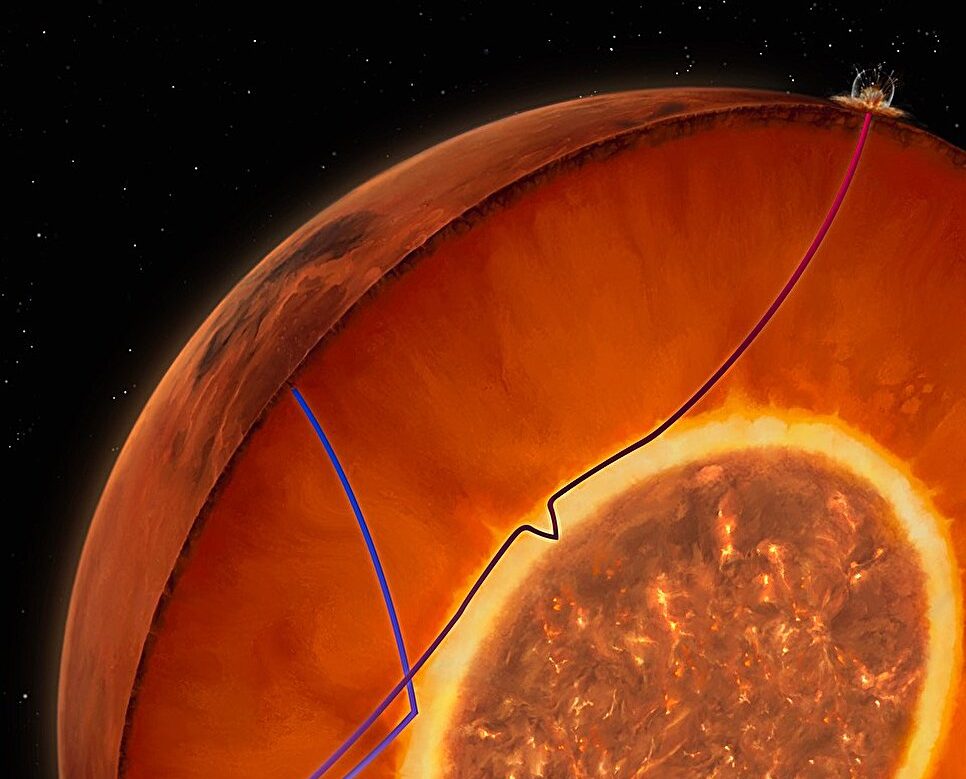
Revealing the “Inside” of Mars
The now-discontinued InSight mission by NASA has played a crucial role in mapping the internal structure of Mars. Offering valuable insights into the size and the composition of the Red Planet’s core, InSight’s observations has contributed to our understanding of the planet’s turbulent history.
Although NASA officially concluded the InSight mission in December 2022, the analysis of observation data still continues. Researchers are utilising seismic data to validate the planet’s structure and its history, producing results that will help refine existing models of the internal composition of Mars.
A noteworthy revelation emerged from an international research team’s work, published on October 25, 2023. The study uncovered the presence of a molten silicate layer atop Mars’ metallic core, providing fresh perspectives on the planet’s formation, evolution, and its current desolate state.
The paper details the detection of a thin layer of molten silicate situated between the Martian mantle and core, identified through seismic data from Martian quakes. The discovery led researchers to revise previous estimations, indicating that the Martian core is denser and smaller than initially thought. This aligns more closely with other geophysical data and analyses of Martian meteorites.
The researchers resemble this molten layer to a heat blanket enveloping the planet’s core. Not only does this blanket insulate heat, but it also contains high concentrations of radioactive elements, generating heat as they decay. This may explain why Mars lacks an active magnetic field. As a planet lacking a self-sustaining magnetic field, Mars is highly susceptible to solar winds, resulting in the loss of surface water and rendering it inhospitable to life.
The team’s findings support theories suggesting that Mars once existed as a molten ocean of magma that later solidified into layers of molten silicate, iron, and radioactive elements. The heat emitted by these elements likely altered the thermal evolution and cooling history of Mars. The presence of these layers may contribute to our comprehension of how magnetic fields form, how planets undergo cooling processes, and how their internal structures evolve over time.
The discovery of this molten layer stands as a testament that we still obtain new information from the completed InSight mission. The knowledge gained about planetary evolution through Martian quake data, on the other hand, will almost certainly assist future missions to celestial bodies, such as the Moon and other planets like Venus.
REFERENCES
- 1. https://www.sciencenews.org/article/nasa-seismic-data-show-mars-dense-core
- 2. https://phys.org/news/2023-10-scientists-molten-layer-martian-core.html
